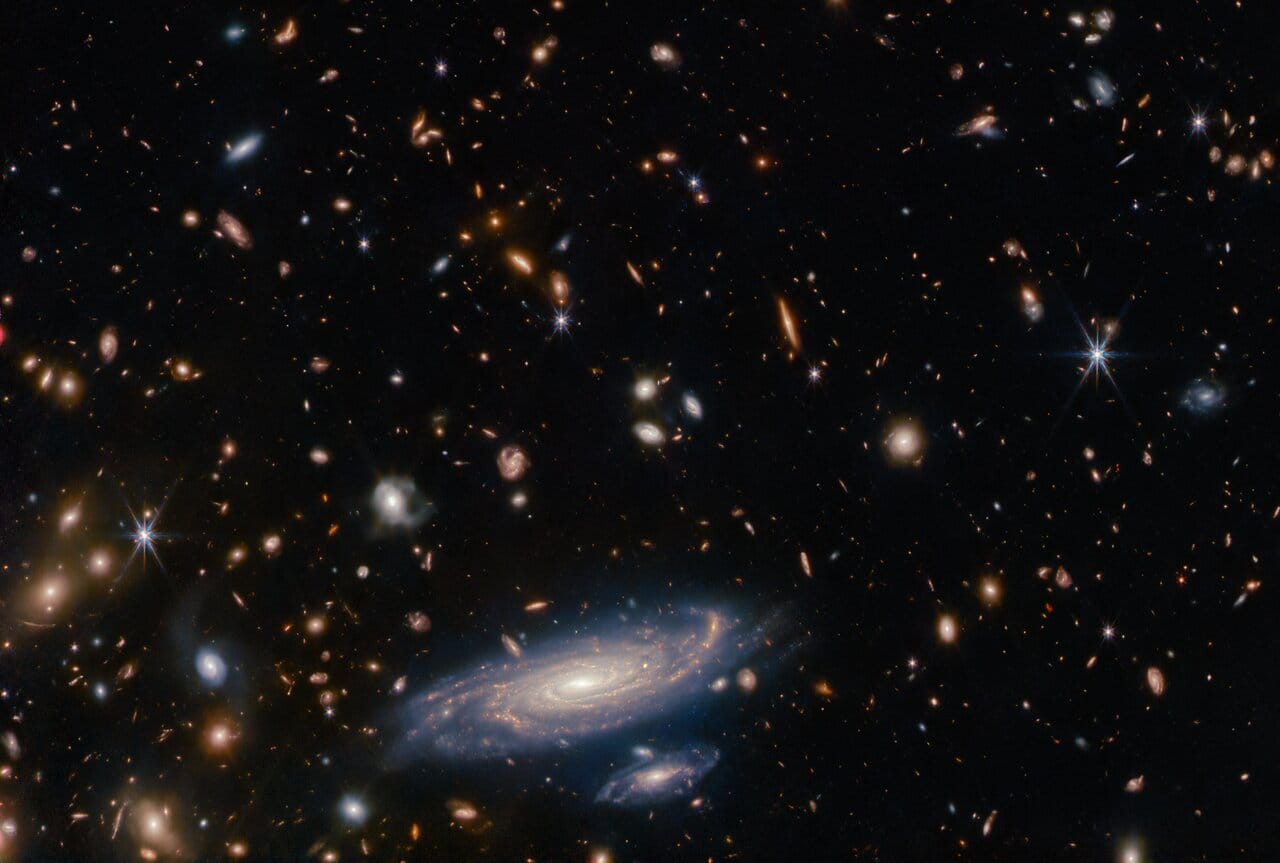The NASA/ESA/CSA James Webb Space Telescope’s Picture of the Month features a packed expanse of galaxies, brilliant stars, and the six-pointed diffraction spikes that have become his trademark.
The enormous spiral galaxy at the image’s bottom is surrounded by a plethora of smaller, farther-off galaxies, ranging in size from full-fledged spirals to simple luminous blobs. Its designation is LEDA 2046648, and it may be found in the constellation Hercules at a distance of about over one billion light-years from Earth.
Read more: What’s The Next Big Thing Comes After James Webb Space Telescope?
Composition Of “The Galaxies”
Understanding the specifics of distant galaxies’ creation, evolution, and composition is one of Webb’s main scientific objectives. Due to these far-off galaxies’ light being redshifted towards infrared wavelengths, Webb’s acute infrared vision allows the telescope to look back in time.
Astronomers will be able to better understand how galaxies evolved to produce the structure we see today by contrasting these systems with galaxies in the nearby universe.
Researchers Involvement
In order to understand how heavy elements were created and accumulated as galaxies evolved, Webb will also examine the chemical makeup of hundreds of galaxies.
Researchers and engineers must calibrate the telescope’s equipment and systems before using Webb to its full capacity for galaxy archaeology.
Conclusion
Webb’s instruments each comprise a complex system of mirrors and other optical components that reroute and concentrate starlight captured by Webb’s primary mirror.
This particular observation was made as part of the launch of Webb’s Near-InfraRed Imager and Slitless Spectrograph (NIRISS).
